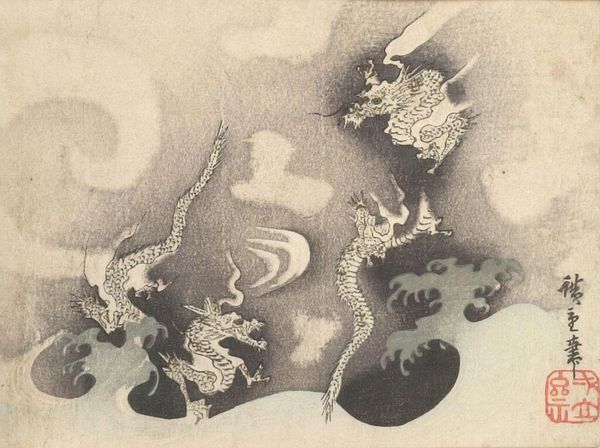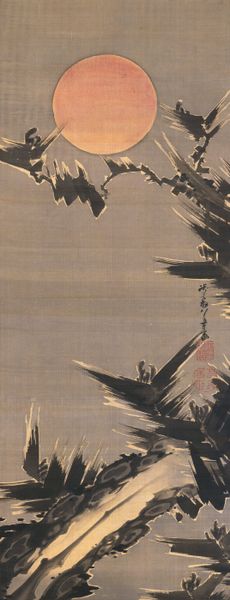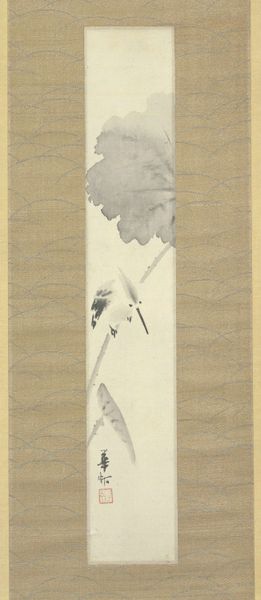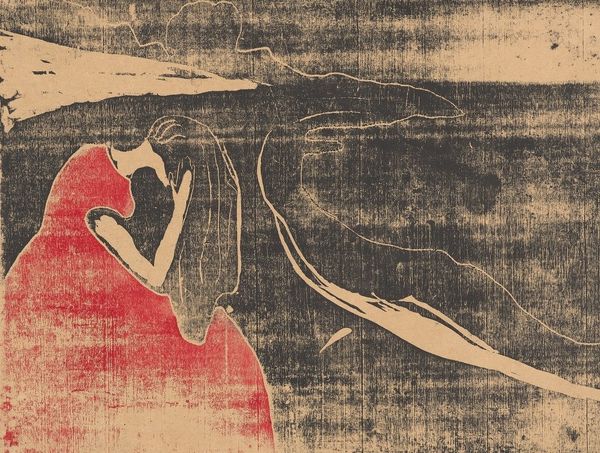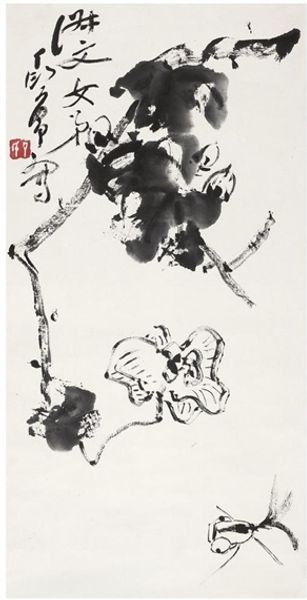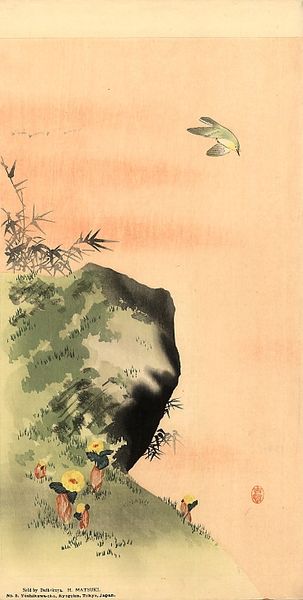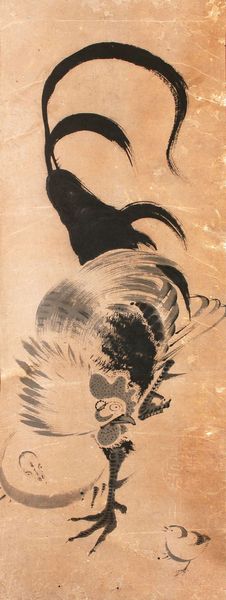
Copyright: Public Domain: Artvee
Curator: Oh, look! Here we have Ohara Koson's woodblock print, "Two Monkeys Playing", dating roughly from 1900 to 1930. Editor: There's something immediately captivating about this image, despite its subdued tones. The energy of their play is almost palpable; you can practically hear the scuffle and chatter. Curator: Koson’s affinity for animal subjects, a hallmark of his Ukiyo-e style, is evident. Notice how he’s used the medium to capture these monkeys, seemingly in mid-tumble. In East Asian art, monkeys are potent symbols often tied to mischief, intelligence, and even protection from evil. Editor: Yes, and the fact that there are two of them immediately reads as a dynamic. We instinctively interpret this interaction through the lens of siblinghood or close friendship. Are they actually playing, or is there a struggle for power at play here, even literally? The historical context of societal hierarchies would surely come to bear on interpreting such relationships. Curator: Intriguing point. The image evokes a certain universality of social interaction and perhaps echoes childhood, as such interactions mirror our own developmental struggles and the beginnings of understanding social power. Editor: I agree. And the seemingly simple composition, coupled with the muted greys and browns, contributes to the reading. The Ukiyo-e style itself, often associated with capturing ephemeral moments in time, adds to this immediacy. It makes one think about how fleeting all forms of joy and camaraderie can be, not just play. Curator: Precisely, that resonance comes not just from our own projections and lived experiences but is subtly invoked by the artist’s choices, embedding these symbols, consciously or not, within the fabric of shared visual memory. I think of monkeys representing the trickster archetype and wisdom across cultures, not only East Asia. Editor: It is tempting to reduce the symbolism, but that's where understanding Ukiyo-e's broader societal influence provides richer interpretations beyond individual symbolism. Ultimately, that shared visual understanding of "play" as it transcends eras, nations, and species makes this print especially impactful for our current audiences, don’t you think? Curator: I concur entirely. Its enduring impact surely springs from this potent intertwining of skill, technique, and symbols of timeless interaction, no? Editor: Indeed! A truly resonant snapshot of universal interaction.
Comments
No comments
Be the first to comment and join the conversation on the ultimate creative platform.
